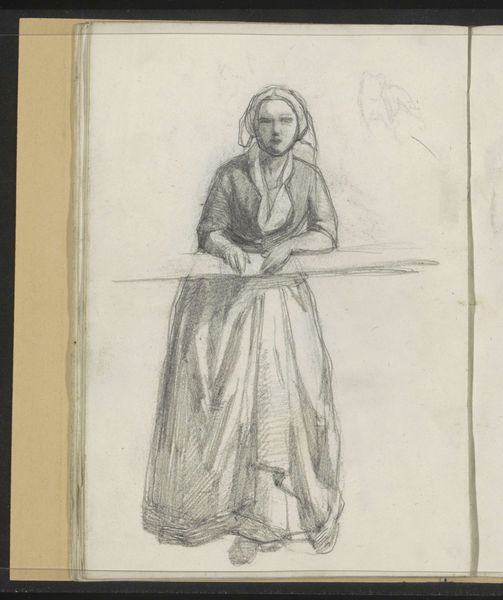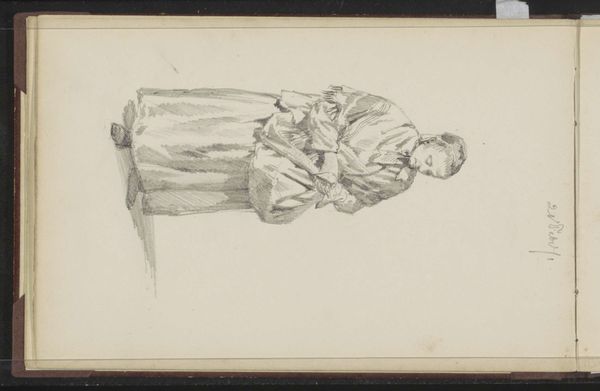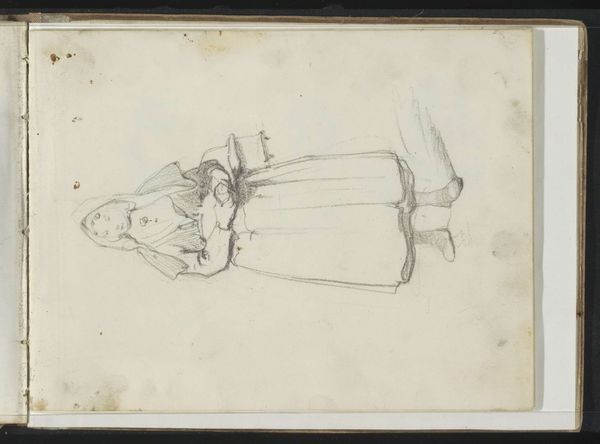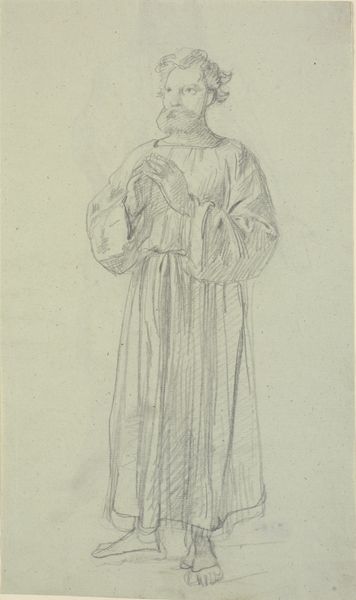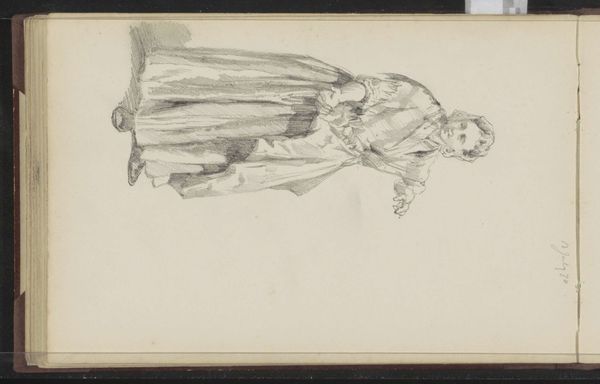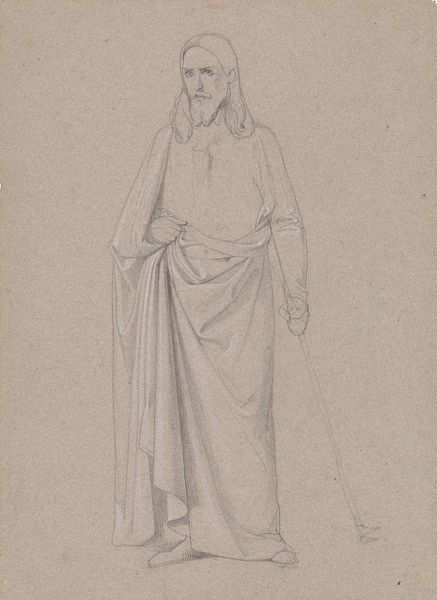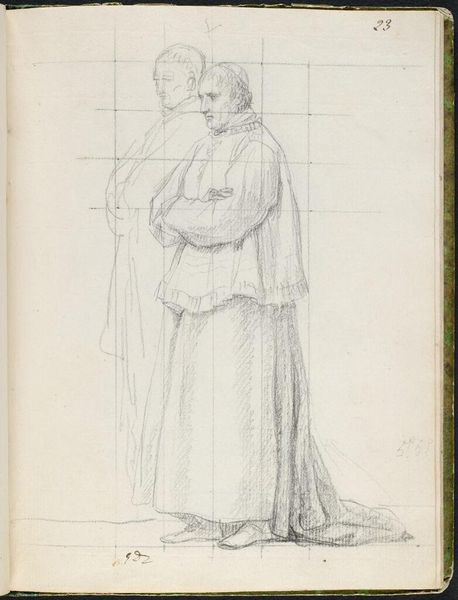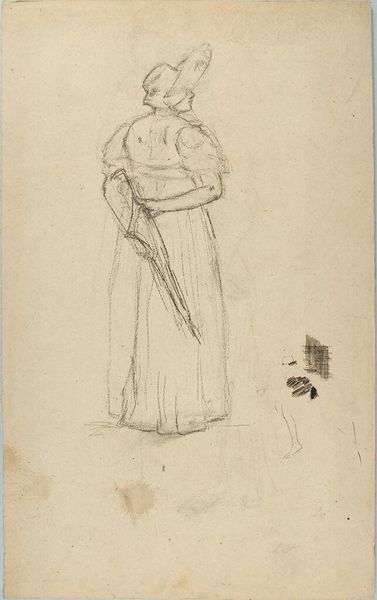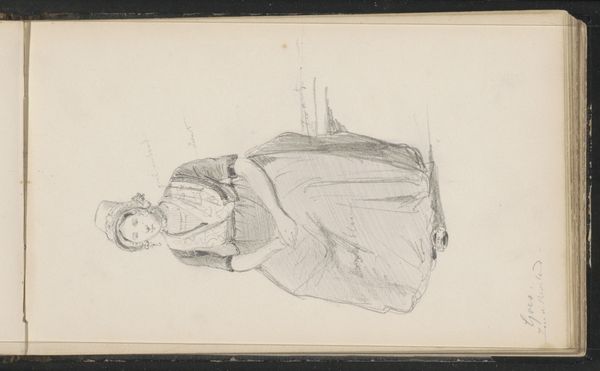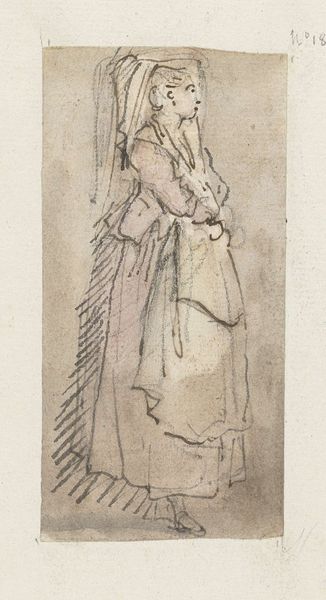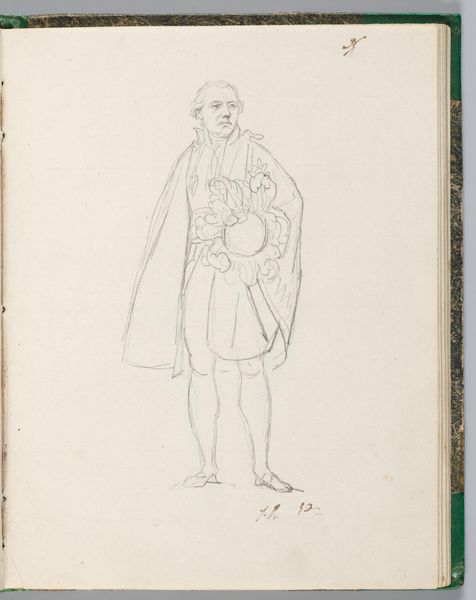
drawing, pencil
#
portrait
#
drawing
#
pen sketch
#
sketch book
#
landscape
#
personal sketchbook
#
idea generation sketch
#
sketchwork
#
ink drawing experimentation
#
pen-ink sketch
#
pencil
#
sketchbook drawing
#
storyboard and sketchbook work
#
sketchbook art
#
realism
Copyright: Rijks Museum: Open Domain
This pencil drawing depicts a standing woman in a cape, set against a mountainous backdrop, by Jozef Israëls. The woman's cape, a symbol of protection and concealment, drapes over her shoulders, evoking a sense of mystery and introspection. Consider how the motif of the draped figure appears throughout art history, from ancient Roman statues to Renaissance paintings. The act of veiling or concealing, often associated with mourning, modesty, or spiritual revelation, transcends time and culture. The cape or veil suggests not only physical protection but also a psychological barrier, hinting at hidden emotions or inner turmoil. Here, the woman's gaze, directed away from the viewer and towards the horizon, invites us to contemplate her inner world and the landscape's emotional resonance. This is a powerful force that engages us on a deep, subconscious level. Indeed, symbols evolve and resurface, taking on new meanings with each historical context, yet always carrying echoes of their past.
Comments
No comments
Be the first to comment and join the conversation on the ultimate creative platform.
